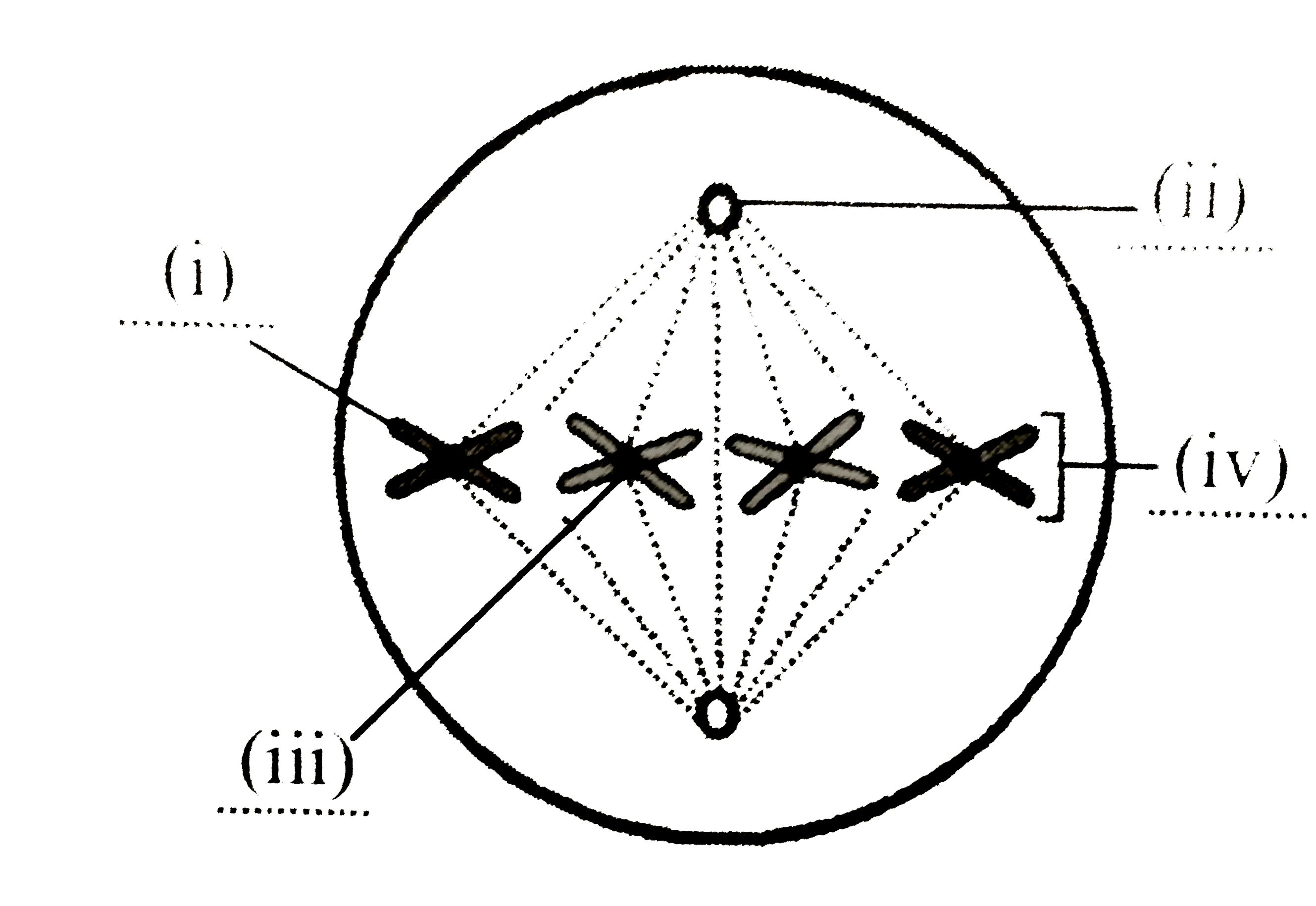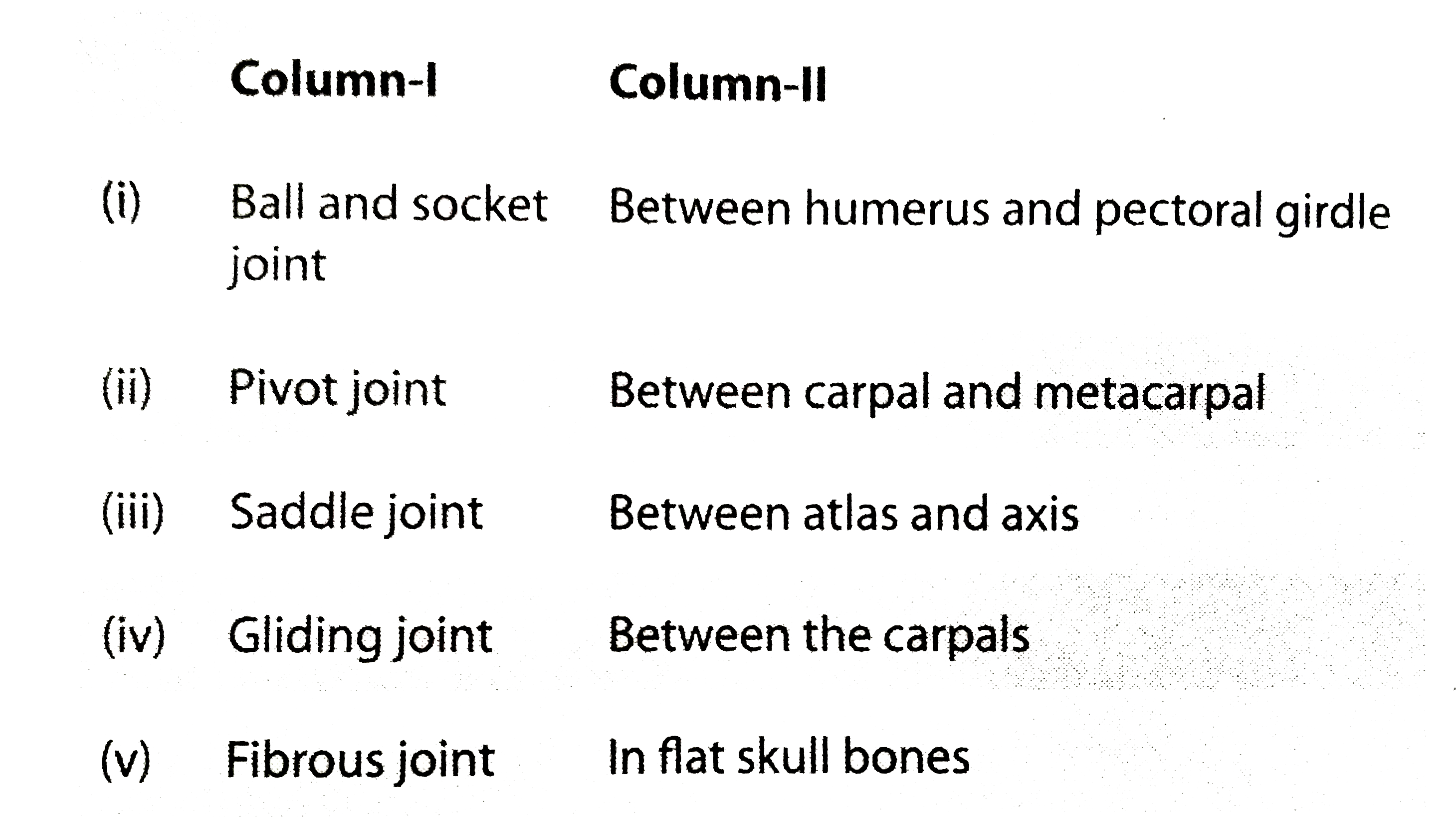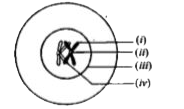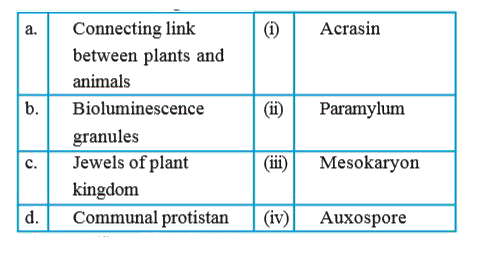According to IUCN, some of the extinctions include
(i) Dodo
(ii) Indian gazelle
(iii) Thylacine
(iv) Steller's sea cow
(a) (i), (ii), (iii) and (iv)
(b) (ii) and (iv)
(c) (i),(iii) and (iv)
(d) (iii) and (iv)
(i), (ii), (iii) and (iv)
(ii) and (iv)
(i),(iii) and (iv)
(iii) and (iv)
The correct Answer is:C
To solve the question regarding the extinctions according to the IUCN, we will follow these steps:
1. Identify the Species Listed: The question lists four species:
- (i) Dodo
- (ii) Indian gazelle
- (iii) Thylacine
- (iv) Steller's sea cow
2. Research Extinction Status: We need to determine which of these species are indeed extinct according to the IUCN Red List:
- Dodo: Extinct (last seen in the late 17th century).
- Indian Gazelle: Not extinct; it is still found in the wild.
- Thylacine: Extinct (last known individual died in captivity in 1936).
- Steller's Sea Cow: Extinct (hunted to extinction by the 18th century).
3. Compile the Extinct Species: From our research, we find that the extinct species are:
- Dodo (i)
- Thylacine (iii)
- Steller's Sea Cow (iv)
4. Evaluate the Options: Now we can evaluate the options provided in the question:
- (a) (i), (ii), (iii) and (iv) - Incorrect (Indian gazelle is not extinct)
- (b) (ii) and (iv) - Incorrect (Indian gazelle is not extinct)
- (c) (i), (iii) and (iv) - Correct (Dodo, Thylacine, and Steller's Sea Cow are extinct)
- (d) (iii) and (iv) - Incorrect (Dodo is also extinct)
5. Conclusion: The correct answer is option (c) (i), (iii), and (iv).
Final Answer:
(c) (i), (iii) and (iv)
---
- (i) Dodo
- (ii) Indian gazelle
- (iii) Thylacine
- (iv) Steller's sea cow
- Dodo: Extinct (last seen in the late 17th century).
- Indian Gazelle: Not extinct; it is still found in the wild.
- Thylacine: Extinct (last known individual died in captivity in 1936).
- Steller's Sea Cow: Extinct (hunted to extinction by the 18th century).
- Dodo (i)
- Thylacine (iii)
- Steller's Sea Cow (iv)
- (a) (i), (ii), (iii) and (iv) - Incorrect (Indian gazelle is not extinct)
- (b) (ii) and (iv) - Incorrect (Indian gazelle is not extinct)
- (c) (i), (iii) and (iv) - Correct (Dodo, Thylacine, and Steller's Sea Cow are extinct)
- (d) (iii) and (iv) - Incorrect (Dodo is also extinct)
(c) (i), (iii) and (iv)
Topper's Solved these Questions
- BIODIVERSITY & CONSERVATIONBook:NCERT FINGERTPS ENGLISHChapter:BIODIVERSITY & CONSERVATIONExercise:HOTS
Explore 5 Videos
- BIODIVERSITY & CONSERVATIONBook:NCERT FINGERTPS ENGLISHChapter:BIODIVERSITY & CONSERVATIONExercise:NCERT (EXEMPLAR PROBLEMS
Explore 20 Videos
- BIOTECHNOLOGY - PRINCIPLES AND PROCESSESBook:NCERT FINGERTPS ENGLISHChapter:BIOTECHNOLOGY - PRINCIPLES AND PROCESSESExercise:Biotechnology - Principles And Processes
Explore 139 Videos
Similar Questions
Knowledge Check
Which of the following statements describe natural extinction ?
(i) Extinctions abetted by human activities
(ii) Slow replacement of existing species
(iii) Also known as background extinction
(iv) A small population is most likely to be extinct
(a) (i) and (ii)
(b) (i), (ii) and (iii)
(c) (ii), (iii) and (iv)
(d) (i), (ii), (iii) and (iv)A(i) and (ii)B(i), (ii) and (iii)C(ii), (iii) and (iv)D(i), (ii), (iii) and (iv)The argument of 1+i1−i is (i) 0 (ii) −π2 (iii) π2 (iv) π
A0B−π2Cπ2Dπ
Label the structure indicated by (i), (ii), (iii) and (iv)-

View SolutionBiodiversity loss occurs due to
(i) habitat loss and fragmentation
(ii) co-extinction
(iii) over-exploitation
(iv) alien species invasion.
(a) (i) and (ii)
(b) (i), (ii) and (iii)
(c) (ii), (iii) and (iv)
(d) (i), (ii), (iii) and (iv)
View SolutionWhich of the following is/are not carrectly mathched pairs ?

(a) (ii) and (iii)
(b) (i) and (iv)
(c) (v) only
(d) (ii) only
View SolutionRead the following statements and select the correct ones.
(i) Electrophoresis is a technique used for the separation of molecules based on their size and charge.
(ii) Plasmids are extra-chromosomal, self-replicating, usually circular, double stranded DNA molecules found naturally in many bacteria and also in some yeast,.
(iii) It is not advisable to use an exonuclease enzyme while producing a recombinant DNA molecule.
(iv) In EcoRl, the roman numberal I indicates that it was the first enzyme isolated from E.coli
A) (i) and (ii)
B) (iii) and (iv)
C) (i),(ii) and (iv)
D) (i),(ii),(iii) and (iv)
View SolutionWrite the Lewis symbols of (i) C (ii) Cl (iii) O2− (iv) N3−
View SolutionMatch the disease in Column I with the appropriate items
(vector/ pathogen/ diagnostic test/ treatment) in Column II
Column - IColumn - IIa.Ringwormi.Aedesb.Ascariasisii.Widal test c.Dengueiii.Blockage of the intestinal passaged.Typhoidiv.Trichophyton
(1) a-(iv) ,b-(iii), c-(i), d- (ii)
(2) a-(ii) ,b-(iii), c-(i), d- (iv)
(3) a-(iv) ,b-(i), c-(ii), d- (iii)
(4) a-(i) ,b-(ii), c-(iii), d- (iv)
View Solution



